A Perfectly Preserved Dinosaur Embryo Discovered in a 72-Million-Year-Old Egg
An incredibly rare fully articulated dinosaur embryo has been discovered inside a fossilized egg. The egg, thought to be between 66 and 72 million years old, has been collecting dust in a storage room of a museum in China for nearly a decade.
Scientists in China have discovered an incredible link between dinosaurs and modern birds that could change the way we think about both creatures.
Where Was the Embryo Discovered?
The embryo was discovered inside Shahe Industrial Park in Ganzhou City, Jiangxi Province. However, the egg was originally discovered by paleontologists from the University of Birmingham within the rocks of the Hekou Formation at the park in 2000.
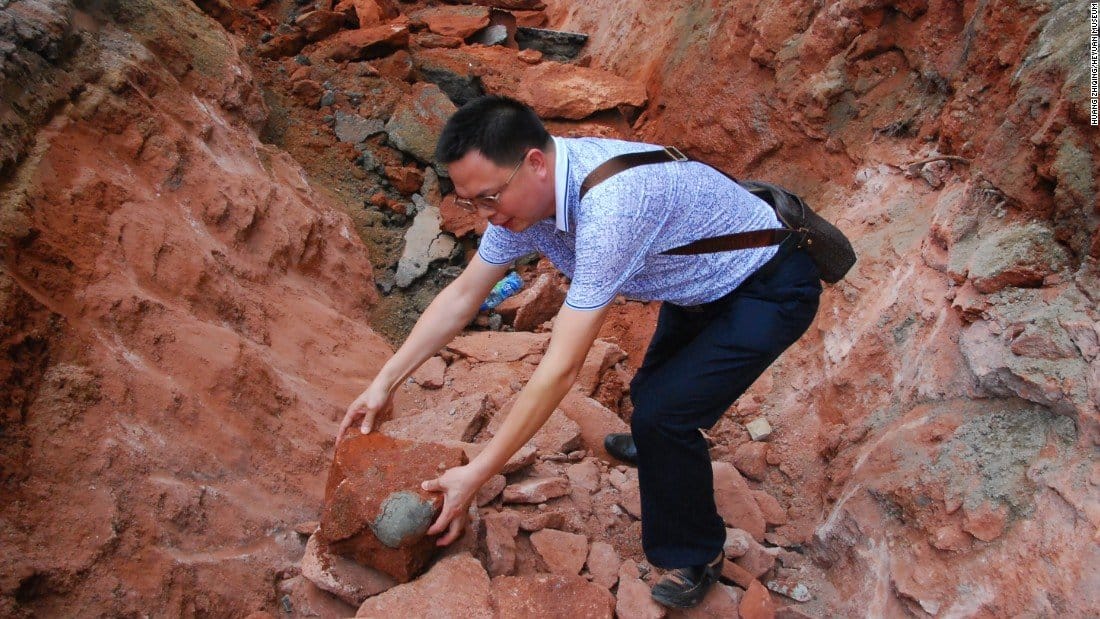
Source: Huang Zhiqing/Heyuan Museum
The study (via iScience) conducted discovered that the embryo, which has been named Baby Yingliang, was found to belong to a group of feathered, toothless theropods known as oviraptorosaurs.
What Did the Embryo Look Like?
The unhatched creature is estimated to be about 27 centimeters (10.6 inches) long, and marks the first discovery of a dinosaur embryo displaying a posture that is typically present in modern-day bird embryos.

Source: Lida Xing, Kecheng Niu, Waisum Ma, Darla K. Zelenitsky, Tzu-Ruei Yang, Stephen L. Brusatte/iScience
Shortly before hatching, modern birds engage in a series of maneuvers known as tucking. Tucking involves curving the body and bringing the head down under the wing. The evolutionary origins of this behavior had been unknown until now.
Why Is Tucking Vital for Hatching Birds?
Tucking is believed to play a vital role in the hatching process of birds. Those that fail to adopt this position are much less likely to survive hatching from their egg.
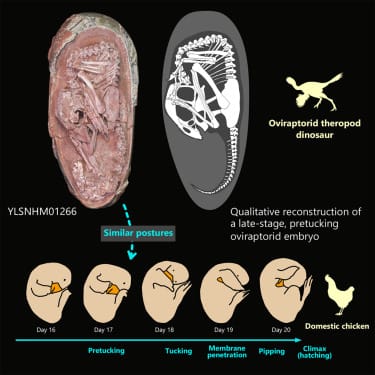
Source: Lida Xing, Kecheng Niu, Waisum Ma, Darla K. Zelenitsky, Tzu-Ruei Yang, Stephen L. Brusatte/iScience
Baby Yingliang appears to have adopted the same pose that suggests the phenomenon may have first evolved among the ancient theropod ancestors of modern-day birds.
Why Is Tucking Impressive for This Embryo?
Reporting their discovery in their 2021 paper, the authors explain that Baby Yingliang was found with its head “ventral to the body, with the feet on either side, and the back curled along the blunt pole of the egg.”

Source: Lida Xing, Kecheng Niu, Waisum Ma, Darla K. Zelenitsky, Tzu-Ruei Yang, Stephen L. Brusatte/iScience
The posture, they say, is “previously unrecognized in a non-avian dinosaur, but reminiscent of a late-stage modern bird embryo.”
Dinosaur Embryos Are the Rarest Fossils
Dr. Fion Waisum Ma, the vertebrate paleontologist who led the study, told Science Daily, “Dinosaur embryos are some of the rarest fossils and most of them are incomplete with the bones dislocated.”
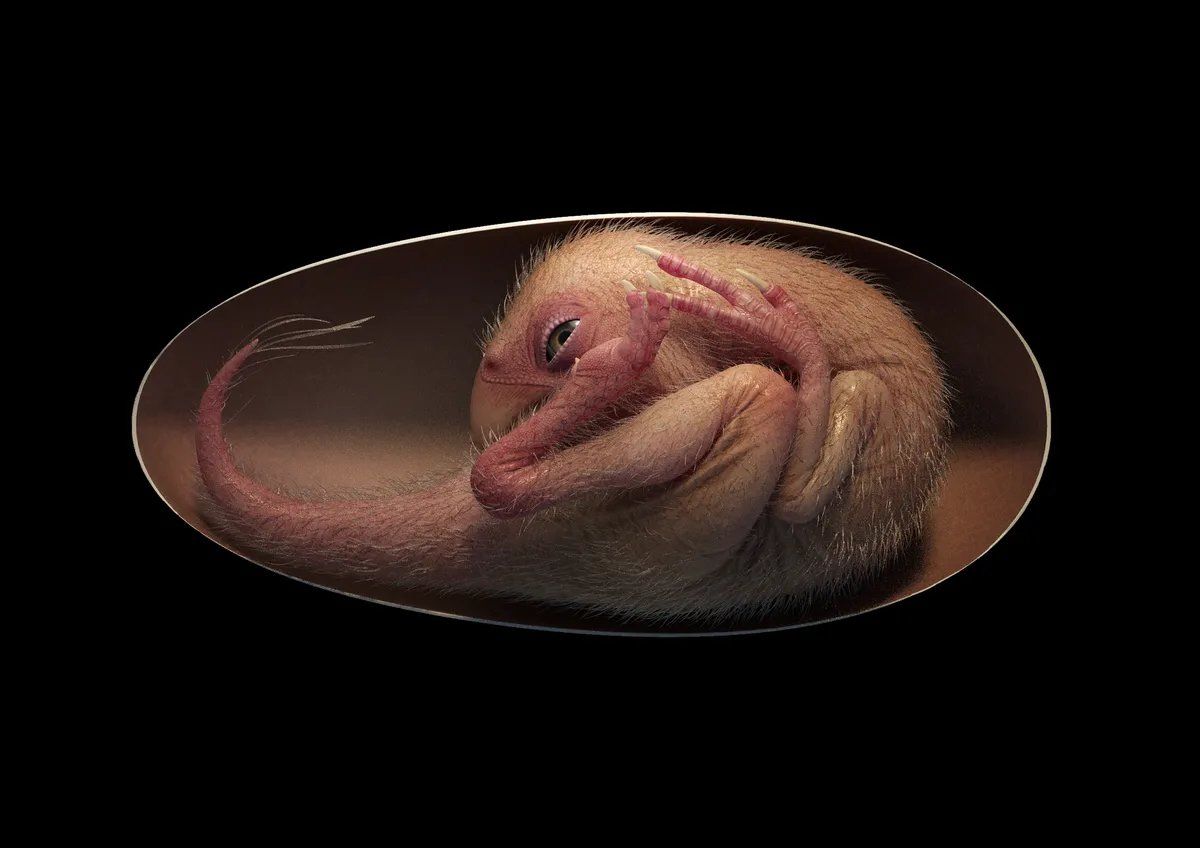
Lida Xing
Ma continued: “We are very excited about the discovery of Baby Yingliang—it is preserved in a great condition and helps us answer a lot of questions about dinosaur growth and reproduction with it. It is interesting to see this dinosaur embryo and a chicken embryo pose in a similar way inside the egg, which possibly indicates similar prehatching behaviors.”
Baby Yingliang’s Discovery Is the First of Its Kind
Baby Yingliang’s discovery is a first of its kind, allowing researchers to take a rare look at an intact baby theropod in a complete dinosaur embryo.
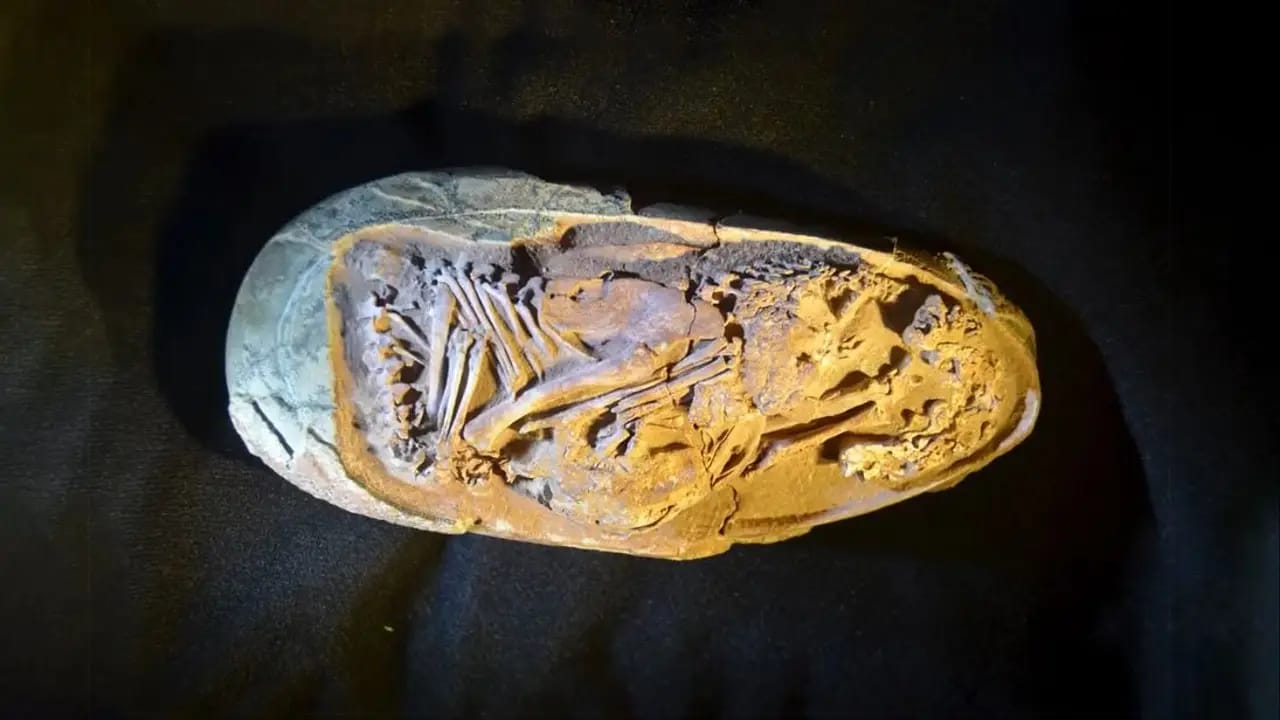
Source: Yingliang Stone Nature History Museum via Storyfu
“This little prenatal dinosaur looks just like a baby bird curled in its egg, which is yet more evidence that many features characteristic of today’s birds first evolved in their dinosaur ancestors,” study author Professor Steve Brusatte said in a statement, reacting to this fascinating discovery.
Most Modern Birds Come From Theropods
The skeletons of dinosaurs are rarely preserved in the embryonic stage. Through the discovery of Baby Yingliang, researchers from China, the U.K., and Canada were able to study the positions of the dinosaur with other previously found oviraptorid embryos.
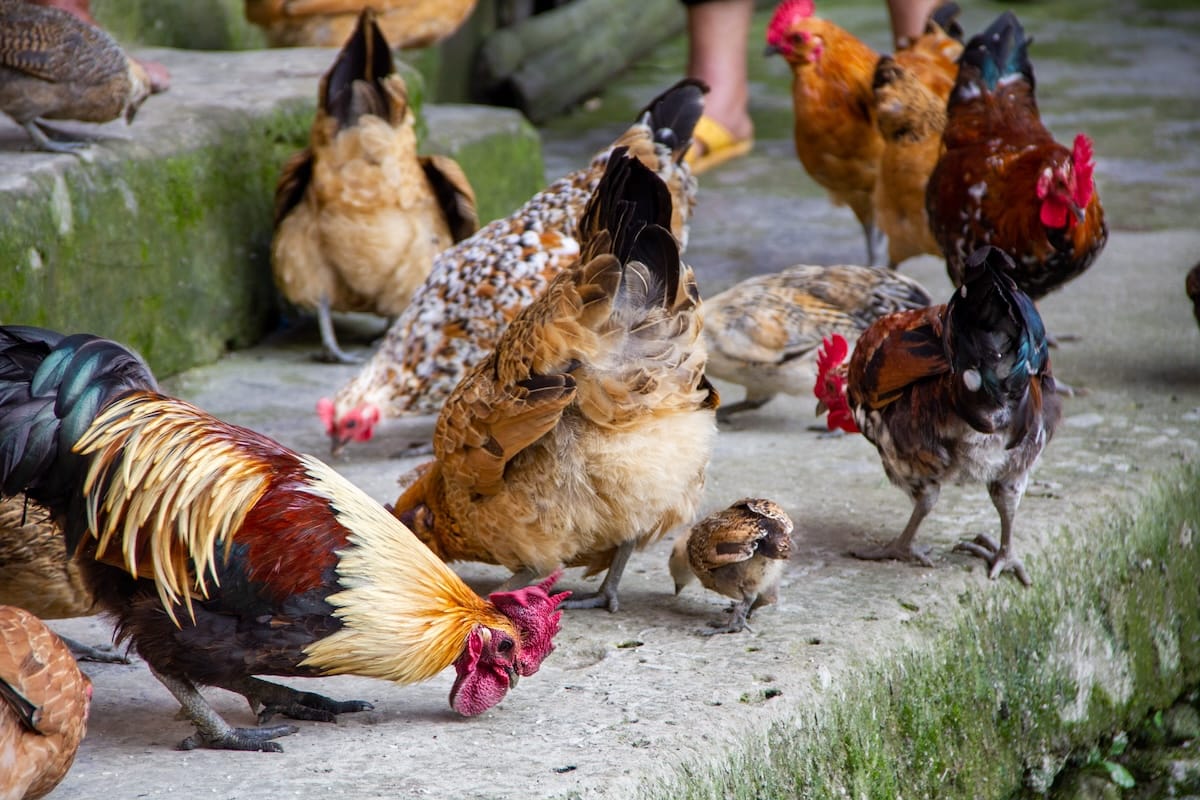
Source: Marie Anna Lee
All birds evolved directly from a group of two-legged dinosaurs known as theropods, which include the Tyrannosaurus rex and small velociraptors.
Other Dinosaur Discoveries That Are Changing How We Think
These last few years have been great new dinosaur discoveries. Researchers discovered a big-jawed, plant-eating dinosaur that lived almost 99 million years ago in the mid-Cretaceous called the Iani smithi.
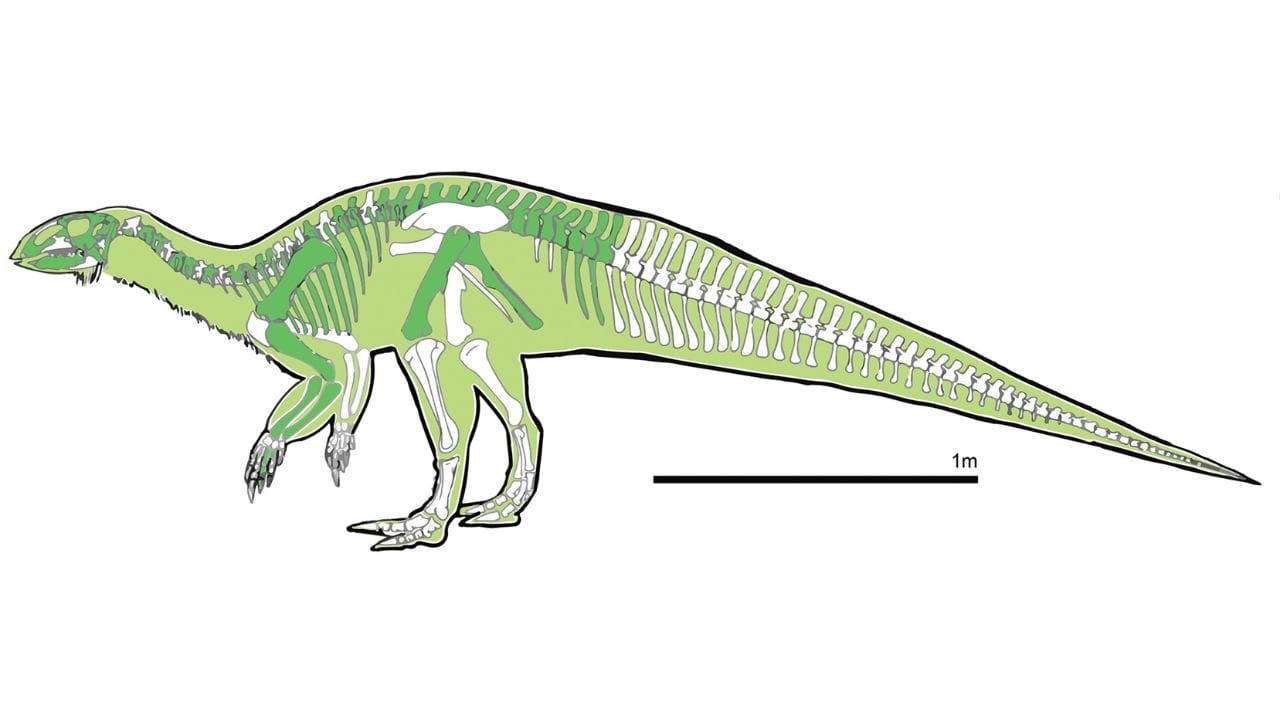
Source: Lindsay E. Zanno/Plos
The discovery has helped researchers better understand why some species survived while others did not, and the Iani smithi could offer some clues as to what plants the dinosaurs ate and the ecosystem that allowed the dinosaur to survive.
Vectipelta Barretti Were World Travelers
Off the south coast of England is an island often called Dinosaur Island because of the number and diversity of dinosaur fossils discovered there over the years. A recent addition to the growing list of dinosaurs discovered on the island is the Vectipelta barretti.
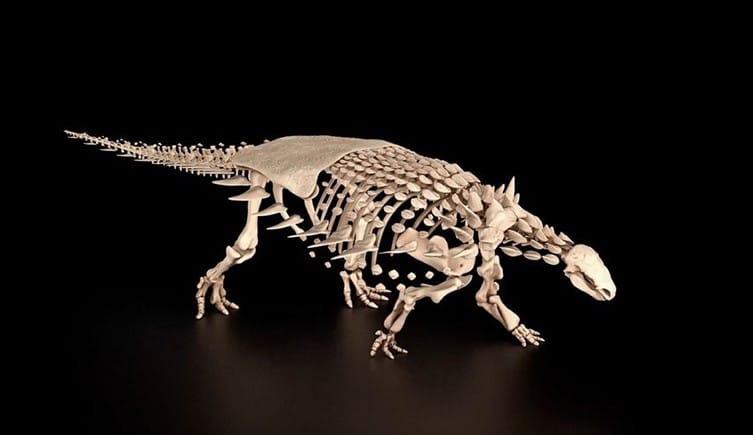
Source: Natural History Museum
Vectipelta barretti was an ankylosaur, a type of plant-eating dinosaur with short legs and a wide body covered with bony, spiked plates. Vectipelta barretti lived during the early Cretaceous, about 125 million years ago and is closely related to ankylosaurs found in China, meaning that this dino was a world traveler.
The Largest Discovery Made So Far
The largest discovery made this year is the Chucarosaurus diripienda. The titanosaurian sauropod found in the southern Patagonia region of Argentina, another area teeming with dinosaur fossils, lived in the late Cretaceous, about 95 million years ago.

Source: Public Domain
Some titanosaurs were huge. The one that was discovered recently was 30 meters (98.4 feet) long, making it likely one of the largest animals ever to live on Earth.
Will Baby Yingliang Be the Last of Its Kind?
There is still a lot to be discovered about our world. As more and more new and rare fossils are discovered, we can see that the Earth has always been home to a diverse range of creatures, both small and massive.

Source: Wikicommons
The discovery of Baby Yingliang is the first of its kind, but who’s to say it will be the last?
